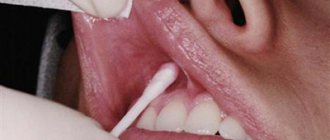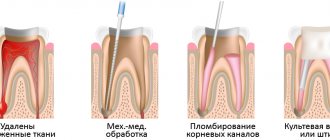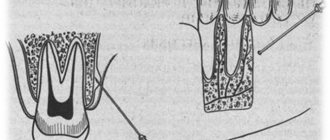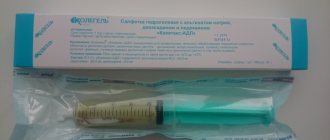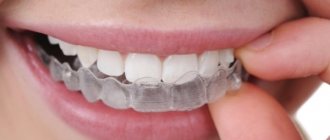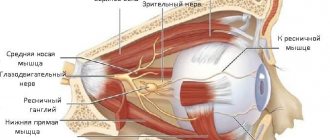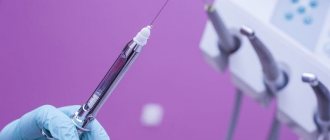Description of the drug
Scandonest without adrenaline is produced in blisters of 10 ampoules each. The drug is intended for professional use and is administered by injection into soft tissue.
Compound:
- mepivacaine hydrochloride;
- sodium hydroxide;
- sodium chloride;
- saline solution
The active ingredient of Scandonest is mepivacaine hydrochloride, the action of which is aimed at blocking the nerve impulses responsible for pain. Unlike other painkillers, Scandonest is characterized by a vasoconstrictor effect. This is radically opposite to the effect of medications that dilate the lumen of blood vessels.
Note! Scandonest is used for pain relief in patients for whom adrenaline is contraindicated.
The anesthetic effect lasts at least 30 minutes and occurs 3-4 minutes after administration of the drug. After 1.5 hours, the drug is partially eliminated from the body. However, it should be borne in mind that no more than 10% of the drug is excreted by the kidneys; the liver takes the brunt. Therefore, any pathological changes in the liver can lead to problems.
Note! When using local anesthetics, the patient remains conscious and responds adequately to the situation.
The result of using Scandonest is loss of sensitivity to pain. There is not even any unpleasant sensation. Before administering the medicine, the dentist freezes the area so that there is no discomfort during the injection. After the drug begins to act, therapy takes place in a calm environment.
Application in pediatric dentistry
Scandonest is used in pediatric dentistry, as it provides 100% pain relief and does not cause negative side effects. This is especially true for young patients under five years of age for whom adrenaline is contraindicated. After the age of five, children can be treated for pain with drugs containing adrenaline, for example, Ultracain DS. The dosage of the medicine corresponds to the age of the small patient.
The dentist’s work with the child should be carried out with the child’s complete trust in the doctor. After pain relief, the child gains confidence in the dentist and allows the necessary therapy to be carried out.
Scope of application of rubber dam.
- Endodontic dental treatment . When treating root canals, it is extremely important not only to maintain ideal sterility for the tooth, but also to prevent accidental contact with the oral mucosa of medications that can cause an allergic reaction.
- Restoration of teeth with light-curing fillings and artistic restorations. In order to achieve reliable adhesion of the filling material to the tooth surface, the conditions of absolute dryness of the treated surface must be met, which the rubber dam invariably helps with.
- Teeth whitening. To ensure that the whitening composition, which affects the enamel, does not injure the mucous membrane, the gums must be isolated using a liquid rubber dam. Professional teeth whitening is not complete without the use of a rubber dam.
- Fissure sealing. For high-quality fissure sealing (coating the chewing surface of the tooth with a special composition in order to protect the enamel from destruction by caries), a perfectly dry tooth surface is necessary.
- Splinting of teeth. When splinting, the adhesive material adheres better to the enamel surface when the risk of accidental saliva ingress is eliminated.
Indications and contraindications
Scandonest is widely used in dentistry for the treatment and extraction of teeth, surgical manipulations on the oral mucosa, and during operations on the jaw.
Absolute contraindications:
- intolerance to the ingredients of the drug;
- severe diseases of internal systems;
- pathology of hemoglobin formation (porphyria);
- muscle weakness (myasthenia gravis);
- children under five years of age.
Relative contraindications:
- pregnancy and breastfeeding;
- renal/liver failure;
- cardiovascular pathology;
- elderly patients over 65 years of age;
- inflammatory processes at the injection site.
The dosage of the medication depends on the age of the patient and the nature of the treatment procedures. For patients over 65 years of age, the dose of administration is half the usual dose.
Scandonest during pregnancy is prescribed with great caution after the approval of the gynecologist. The active substance is easily absorbed by the placenta and penetrates into the fetus. When feeding, you need to take into account the time it takes for the substance to be removed from the body. The active ingredients can pass into breast milk, but in small quantities.
Contraindications for use
Hypersensitivity; injection into the submucosa of the palate; malignant hyperthermia; severe liver failure (porphyria, cirrhosis); severe arrhythmia; AV block of the third degree; arterial hypertension; severe form of diabetes mellitus; IHD; epilepsy; hyperthyroidism; angle-closure glaucoma; age up to 4 years; myasthenia gravis; simultaneous use of MAO inhibitors.
With caution
Conditions accompanied by a decrease in hepatic blood flow (for example, chronic heart failure, diabetes mellitus, liver disease), progression of cardiovascular failure, inflammatory diseases or infection of the injection site, pseudocholinesterase deficiency, renal failure, hyperkalemia, acidosis, old age (over 65 years) .
Side effects
Any medicinal substance can cause negative effects of varying severity. In the case of using Scandonest, these may be reactions of different body systems.
CNS:
- drowsiness and lethargy;
- motor impairment;
- failure of tactile sensations;
- dizziness, headache;
- excessive excitability, anxiety;
- trembling of limbs;
- dilated pupils;
- loss of consciousness.
Vascular system:
- arrhythmia, tachycardia;
- decrease in pressure;
- bradycardia;
- pain in the sternum.
The patient may experience nausea and vomiting, fecal and urinary incontinence, and respiratory depression. In some cases, allergy symptoms may occur - hives, itching, rashes, swelling at the injection site. Numbness and a cold feeling at the injection site (as well as the lips and tongue) are common symptoms. Severe side effects include the patient's state of shock.
Important! The appearance of side effects requires qualified medical care.
Scandonest slows down motor reactions, so after use it is not recommended to drive a vehicle or work with equipment that requires concentration and precise movements.
Precautions
To avoid allergic reactions, it is recommended to do a test test by injecting a small volume of the drug - 5%.
Patients should not eat or chew gum until tissue sensation is fully restored. There is a certain risk of biting your lip, cheek or tongue.
Possible adverse reactions
In case of individual intolerance to the active substance of the solution, the following negative reactions are possible:
- from the cardiovascular system (cardiovascular system) the following is noted: decreased pressure, tachycardia, chest pain, bradycardia, arrhythmia;
- Central nervous system : headache, general weakness, dilated pupils, dizziness, numbness of the tongue and lips, possible loss of consciousness; cessation of breathing – apnea;
- urinary system : involuntary urination is noted;
- in the blood is increased - methemoglobinemia;
- digestive system : vomiting, problems with stool, pain and cramping in the abdomen;
- local reactions : edema may form at the injection site.
If any of the above symptoms are detected, the use of the solution is stopped, treatment is symptomatic.
Analogs
Analogues of the drug Scandonest contain one or more substances with identical effects. The following substitutes are used in medical practice:
- Isocaine;
- Mepivacaine;
- Mepivastezin;
- Mepidont;
- Mepicaton;
- Scandinips;
- Ultracaine DS;
- Articaine.
Isocaine
Isocaine, produced in Canada, is a local anesthetic medicine for blocking pain. The active ingredient is mepivacaine. The medicine is produced in injection ampoules intended for professional use. For local anesthesia, a 3% solution of the drug is administered, the dosage depends on the nature of the intervention.
Mepivacaine
Mepivacaine is a synonym for Scandonest, fully consistent with its composition and action. The drug is less toxic than lidocaine and also less effective. Mepivacaine is not recommended for use in patients with poor blood clotting. During soft tissue surgery, severe blood loss is possible, which can only be stopped by vasoconstrictor adrenaline. In some cases, patients are prescribed blood thinners several days before receiving Mepivacaine.
Mepivastezin
Mepivastezin is a drug for submucosal injection used in dentistry and for surgical interventions. The drug has local anesthetic and immunomodulatory effects. The active substance is mepivacaine. Mepivastezin is not recommended for use in patients with poor health or with severe kidney/liver pathologies. The drug is not recommended for use in early pregnancy due to its toxic effect on the fetus; breastfeeding can be continued one day after administration of the drug dose.
Mepidont
Mepidont is produced in Italy. This is a complex drug that contains mepivacaine and epinephrine. Epinephrine has a constricting effect on blood vessels and enhances the properties of mepivacaine. The drug is intended for professional use; prior consultation with a doctor is required before administration. Side effects are similar to other drugs based on mepivacaine, and allergic reactions are possible. Mepidont does not combine well with some medications, so on the eve of treatment the use of medications should be discontinued.
Scandinibsa
Scandinibsa, produced in Spain, based on mepivacaine, has local anesthetic properties and is administered by injection into soft tissue. Mepivacaine enhances the healing properties of other drugs that block the sensitivity of the central nervous system. Side effects occur due to sensitivity to the substances that make up the drug. In case of severe side effects syndrome, medical assistance should be provided. Eating is allowed only after the sensitivity of the nerve endings has been restored.
Ultracaine
Ultracaine is often used for treatment in the dental office. This drug does not cause significant side effects or contraindications. With the help of Ultracaine, a wide variety of dental procedures are performed, the patient does not feel pain. The drug is also used in pediatric dentistry, but after the age of four.
Important! Ultracaine is approved for use by pregnant women, but with the permission of a gynecologist.
The drug contains adrenaline, but in very small quantities. Ultracaine can be used to relieve pain in patients with high blood pressure and cardiovascular pathologies. In case of severe pain, the dosage of the drug may be increased.
Dentists give advantages to Ultracaine, which is several times greater than the effect of Lidocaine. The analgesic effect lasts a minimum of 20 minutes and can last up to 40 minutes. Ultracaine forte anesthetizes tissue within 1 hour 15 minutes.
DocVita
Drug: SCANDINIBSA
Active substance: mepivacaine ATC code: N01BB03 KFG: Local anesthetic for use in dentistry ICD-10 codes (indications): Z51.4 Reg. number: LSR-010989/09 Registration date: 12/31/09 Owner of reg. credential: LABORATORY INIBSA (Spain)
DOSAGE FORM, COMPOSITION AND PACKAGING
| Injection | 1 ml |
| mepivacaine hydrochloride | 30 mg |
1.8 ml - cartridges (10) - contour cell packaging (1) - cardboard packs.
INSTRUCTIONS FOR USE FOR SPECIALISTS.
The description of the drug was approved by the manufacturer in 2011. PHARMACOLOGICAL ACTION
Mepivacaine is an amide-type local anesthetic. When administered by injection near sensory nerve endings or nerve fibers, mepivacaine reversibly blocks voltage-gated sodium channels, preventing the generation of impulses at sensory nerve endings and the conduction of pain impulses in the central nervous system.
Unlike most local anesthetics that have vasodilating properties, mepivacaine does not have a pronounced effect on blood vessels and can be used in dentistry without a vasoconstrictor.
The effect of the drug begins quickly - after 2-3 minutes. The duration of anesthesia is at least 45 minutes.
PHARMACOKINETICS
When administered into the tissues of the maxillofacial area through conduction or infiltration anesthesia, the Cmax of mepivacaine in blood plasma is achieved approximately 30 minutes after the injection. The half-life (T1/2) is long and is approximately 90-120 minutes.
Mepivacaine is metabolized quite quickly and only 5-10% is excreted unchanged through the kidneys.
Having an amide structure, mepivacaine is not metabolized by plasma esterases. Most of the anesthetic and its metabolites are eliminated by the liver after 30 hours. In case of liver pathology (cirrhosis, hepatitis), accumulation of mepivacaine is possible.
INDICATIONS
— Scandinibsa is used for infiltration, conduction, intraligamentary, intraosseous and intrapulpal anesthesia during surgical and other painful interventions in dentistry.
— Scandinibsa does not have a vasoconstrictor component, which allows it to be used in patients with cardiovascular pathology, diabetes mellitus, and closed-angle glaucoma.
DOSING REGIME
The amount of solution and the total dose depend on the type of anesthesia and the nature of the surgical intervention or manipulation.
The average single dose is 1.8 ml (1 cartridge).
Maximum dose for:
- adults and children weighing more than 30 kg - 5.4 ml;
- children weighing 20-30 kg - 3.6 ml;
- children weighing less than 20 kg - 1.8 ml.
The maximum daily dose of mepivacaine is 4.0 mg/kg body weight, but not more than 320 mg.
SIDE EFFECT
Side effects can occur with accidental extravascular administration or with increased absorption, that is, with resorption from inflamed or highly vascularized tissue, as well as with hypersensitivity to the drug, and are characterized by the following symptoms:
From the central nervous system: dizziness, headache, drowsiness, weakness, motor restlessness, impaired consciousness, up to loss of consciousness, shock, convulsions, trismus, tremor, visual and hearing impairment, diplopia, dilated pupils, nystagmus, paralysis of the legs, paresthesia , violation of motor and sensory functions (in dentistry - insensitivity and paresthesia of the lips and tongue).
From the vascular system: a sharp drop in blood pressure, tachycardia or bradycardia (including fetal bradycardia), in some cases turning into atrioventricular block, collapse (peripheral vasodilation), arrhythmia, chest pain.
From the urinary system: involuntary urination.
From the digestive system: nausea, vomiting, involuntary bowel movements.
From the respiratory system: dyspnea, apnea.
Blood disorders: methemoglobinemia.
Local reactions: swelling and inflammation at the injection site.
Allergic reactions: skin itching and skin rash, angioedema, other anaphylactic reactions (including anaphylactic shock) and urticaria are extremely rare.
If serious adverse reactions occur, it is necessary to immediately ensure the maintenance of respiratory function, if possible with the use of oxygen, monitoring of pulse and blood pressure is necessary.
For frequent convulsions, it is necessary to additionally administer diazepam.
In case of shock, the patient must be placed in the supine position, provided with oxygen, and given IV fluid therapy using antishock drugs.
CONTRAINDICATIONS
- hypersensitivity to mepivacaine (including other local anesthetic drugs of the amide type);
- severe myasthenia;
- severe liver diseases: cirrhosis, hereditary or acquired porphyria;
- children under 4 years of age.
With caution: conditions accompanied by a decrease in hepatic blood flow (for example, chronic heart failure, diabetes mellitus, liver disease); progression of cardiovascular failure; inflammatory diseases or infection of the injection site; pseudocholinesterase deficiency; renal failure; hyperkalemia; acidosis; old age (over 65 years); children's age (over 4 years); during childbirth; during pregnancy.
PREGNANCY AND LACTATION
During pregnancy, local anesthesia is considered the safest method for relieving pain during dental procedures. Scandinibsa does not affect the course of pregnancy. However, as with any therapy, it is necessary to evaluate the benefit to the mother and the risk to the fetus, especially in the first trimester of pregnancy.
Prescribe with caution during childbirth.
Mepivacaine does not pass into breast milk in any significant quantities, since when used during dental procedures it is administered in small doses, which are quickly metabolized and eliminated. If it is necessary to use the drug during lactation, it is necessary to balance the benefits for the mother and the risk for the baby.
SPECIAL INSTRUCTIONS
In some sensitive patients, the administration of the drug may be accompanied by impaired reaction when driving a car. The doctor must decide on a case-by-case basis whether the patient is able to drive a car or operate machinery.
Eating is possible only after sensitivity has been restored.
Use only in a medical facility.
The appearance of an air bubble in the carpule indicates a violation of the temperature conditions of storage or transportation, which can lead to a decrease in the activity of the vasoconstrictor.
OVERDOSE
Symptoms:
Lungs - dizziness, nausea, vomiting, agitation, tinnitus.
Severe - a sharp drop in blood pressure, rapid breathing, tachycardia or bradycardia, AV block, convulsions, coma, respiratory paralysis.
Activity:
When the first signs of overdose appear, you must immediately stop administering the drug.
If breathing is impaired - oxygen, endotracheal intubation, artificial ventilation (central analeptics are contraindicated).
For convulsions, use slow-acting barbiturates intravenously.
In case of severe circulatory disorders and shock - intravenous infusion of solutions of electrolytes and plasma substitutes, glucocorticosteroids. albumin.
For vascular collapse and increasing bradycardia - epinephrine (Adrenaline) 0.1 mg slowly intravenously, intravenously by drip under the control of heart rate and blood pressure.
For severe tachycardia and tachyamitria - IV beta-blockers (selective).
If blood pressure decreases, bring the patient into a horizontal position and, if necessary, administer an electrolyte solution or vasoconstrictor drugs.
Oxygen therapy and monitoring of blood circulation parameters are necessary in all cases.
DRUG INTERACTIONS
Vasoconstrictors (epinephrine, methoxamine, phenylephrine) prolong the local anesthetic effect of mepivacaine.
Mepivacaine enhances the inhibitory effect on the central nervous system caused by other drugs.
Anticoagulants (ardeparin sodium, dalteparin, enoxaparin, heparin, warfarin) increase the risk of bleeding.
When treating the mepivacaine injection site with disinfectant solutions containing heavy metals, the risk of developing a local reaction in the form of pain and swelling increases.
Strengthens and prolongs the effect of muscle relaxants.
When mepivacaine is prescribed with narcotic analgesics, an additive inhibitory effect on the central nervous system develops.
There is antagonism with antimyasthenic drugs in their effect on skeletal muscles, especially when used in high doses, which requires additional correction of the treatment of myasthenia gravis.
Cholinesterase inhibitors (antimyasthenic drugs, cyclophosphamide, thiotepa) reduce the metabolism of mepivacaine.
CONDITIONS OF VACATION FROM PHARMACIES
The drug is available with a prescription.
CONDITIONS AND DURATION OF STORAGE
The drug should be stored in a dry place, protected from light, at a temperature not exceeding 25°C. Keep out of the reach of children.
Shelf life : 5 years.
Do not use after the expiration date stated on the packaging.
Bottom line
Tooth extraction, removal of pulpitis and operations on soft tissues of the oral cavity should be carried out under local anesthesia. Scandonest in dentistry is a new generation anesthetic based on mepivacaine, which does not contain adrenaline. It can be administered to patients sensitive to the effects of adrenaline and who have contraindications to the use of lidocaine. This drug is also used in gynecology and in the treatment of other diseases.
Sources used:
- Solovyova A. A. (2015) Fundamentals of anesthesiology. Local and general anesthesia
- Manufacturer website Septodont (France)
- Anesthesiology and resuscitation, ed. Dolina O. A., M. GEOTAR-Media, 2006
- Bernardsky Yu. I. Fundamentals of maxillofacial surgery and surgical dentistry. - M.: Medical literature, 2000.
Relevance.
Local anesthesia in dentistry is the most commonly used. In this regard, high demands are placed on drugs used in pain relief, among which safety, effectiveness and predictability of the effect are particularly noted. The onset and duration of the local anesthetic effect may vary depending on the physicochemical properties of the solution. The pH of the tissue medium into which the anesthetic is introduced is of decisive importance for the occurrence of the anesthetic effect, since the degree of ionization of the anesthetic molecule depends on this parameter.
Purpose of the study
—to study the pH value of local articaine- and mepivacaine-containing anesthetics and evidence-based substantiation of the choice of drug depending on the pH value.
Material and methods.
To determine the pH level of the local anesthetic solution, a basic level pH meter (S20 SevenEasy pH meter) with a pH resolution of 0.01 was used. A special feature of the device is automatic temperature compensation (ATC), which eliminates the error associated with the difference in operating temperature from 25 ° C. The study itself was carried out in the operating temperature range of 25.5-26.5 ° C. The study examined the minimum and maximum values pH levels of solutions of local anesthetics based on 4% articaine in combination with a vasoconstrictor (1:100,000, 1:200,000) and 3% mepivacaine. To do this, 20.0 ml of solution was taken, placed in a disposable plastic flask and measured at a temperature of 25.5 °C for 2 minutes. The following drugs were studied: Ultracaine D-S, Ultracaine D-S Forte, Septanest with adrenaline, Scandonest, Articaininibs, Scandinibs, Primacaine with adrenaline, Ubistezin forte, Ubistezin, Mepivastezin, Brilocaine, Articaine Binergia.
Results.
It is known that during acute inflammation, tissue pH decreases to 6.0-6.5, and pus levels can vary between 5.6-6.7. Therefore, the reason for the low effectiveness of local anesthesia may be not only a violation of the injection technique, but also acidification of the target area. It has been shown that 3% mepivacaine-containing local anesthetic has a higher pH value than 4% articaine-containing local anesthetic. However, depending on the manufacturer, these data fluctuated, with the lowest average value for Scandinibs being 5.32, and the highest for Scandonest - 6.175. The pH value of local anesthetics based on a 4% articaine solution has great variability, since the concentration of the vasoconstrictor is significant. Thus, at a vasoconstrictor concentration of 1:100,000, the lowest pH value was observed for the drug Brilocaine adrenaline forte and averaged 3.01, and the highest for the drug Septanest, amounting to 4.98. Local anesthetics based on a 4% solution of articaine with a vasoconstrictor 1:200,000 have a higher pH value compared to a higher concentration of vasoconstrictor and have the lowest average value of 3.455 for the drug Articaine Binergia and the highest average value of 5.055 for the drug Septanest.
Conclusion.
Since, under conditions of acidosis, hydrolysis of the local anesthetic salt becomes difficult and its local anesthetic activity decreases, it is necessary to use a drug whose pH value is as close as possible to neutral. The reasons for the low effectiveness of local anesthesia may be associated not only with a violation of the injection technique, but also with acidification of the target area, therefore, during the initial injection, it is necessary to use local anesthetics with a pH close to a neutral value.

